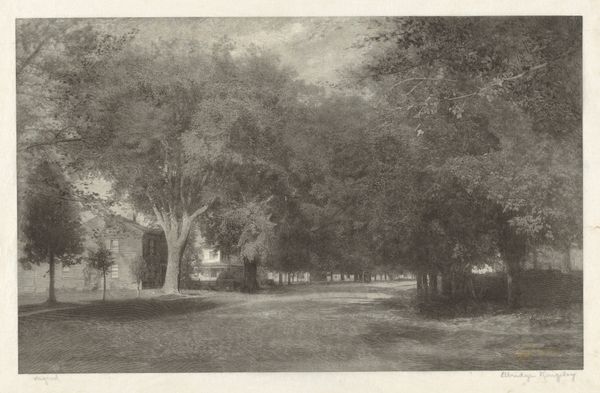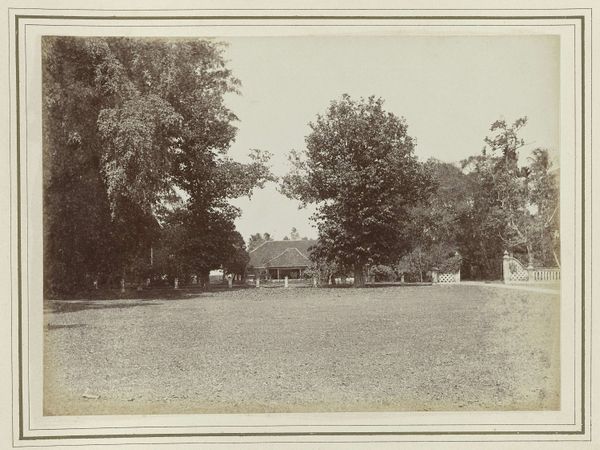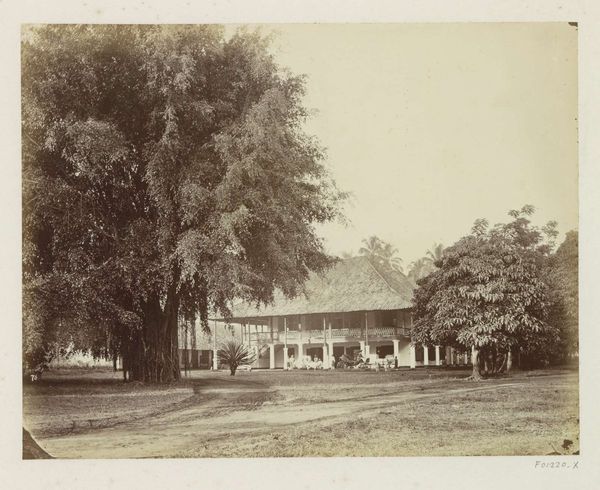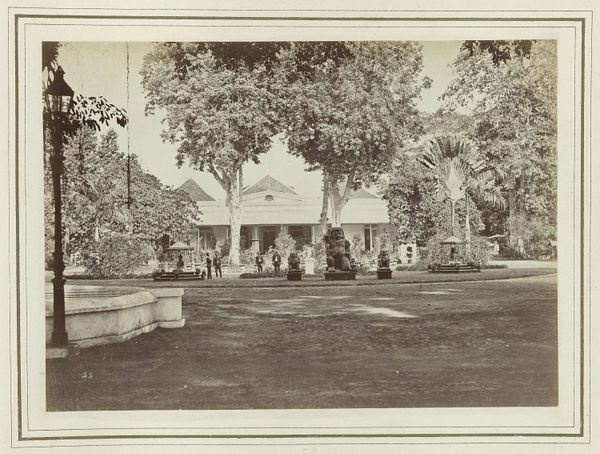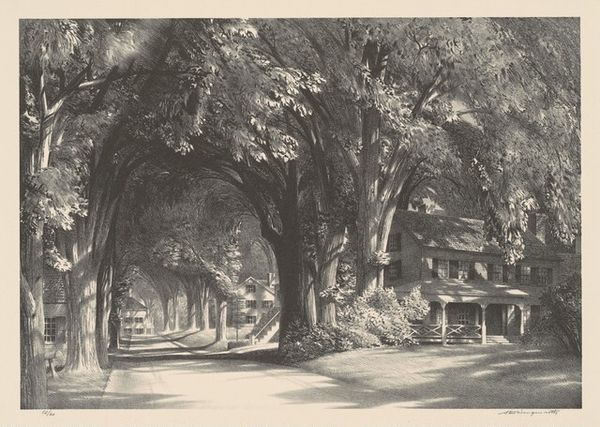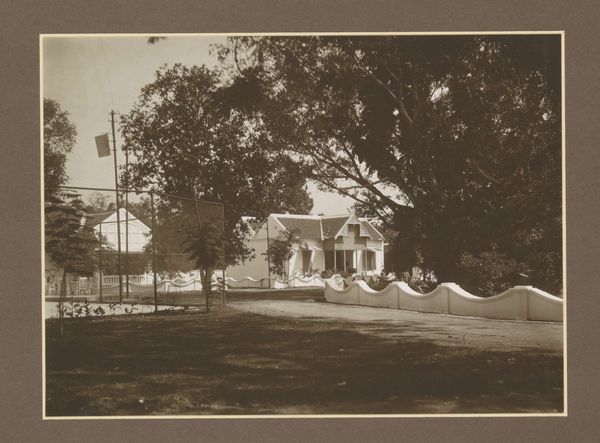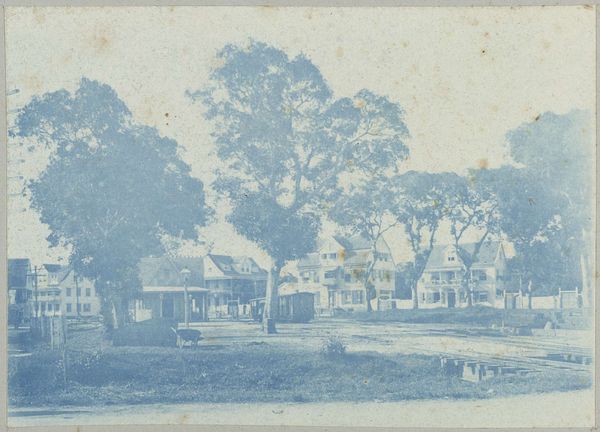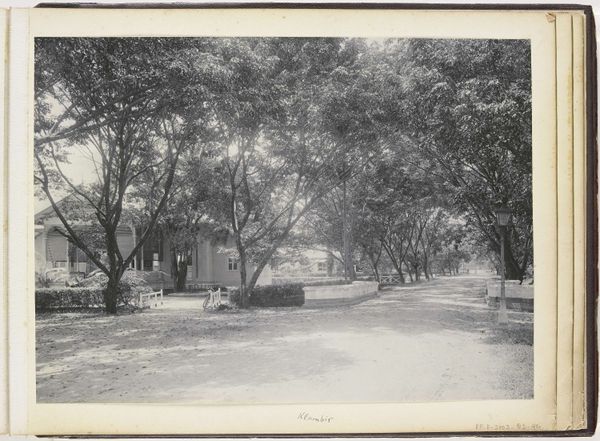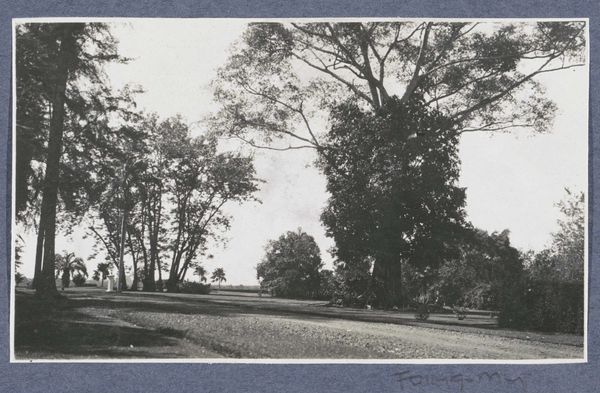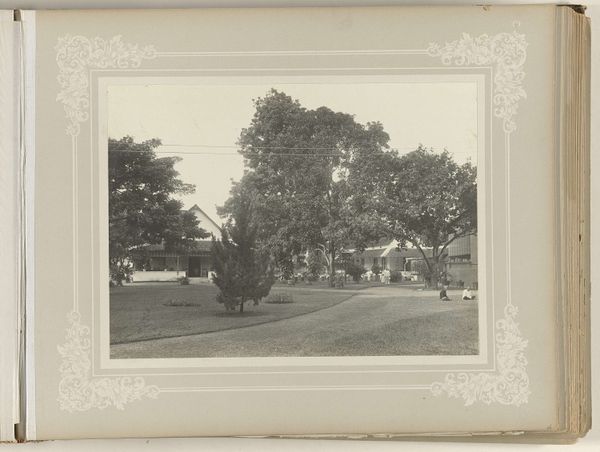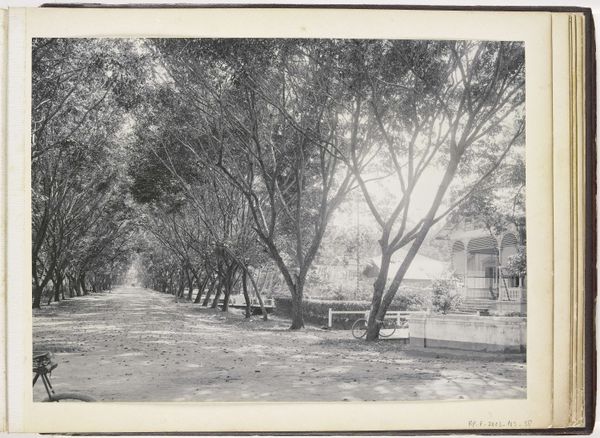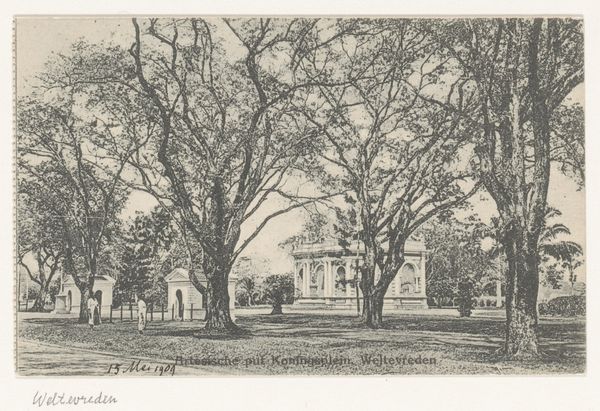
Fermenteer- en sorteerschuren van een tabaksplantage te Padang-Boelan op Sumatra before 1898
0:00
0:00
carljkleingrothe
Rijksmuseum
print, photography
#
african-art
# print
#
landscape
#
photography
#
orientalism
Dimensions: height 178 mm, width 284 mm
Copyright: Rijks Museum: Open Domain
Editor: So, here we have "Fermenteer- en sorteerschuren van een tabaksplantage te Padang-Boelan op Sumatra," taken before 1898, currently held at the Rijksmuseum. It appears to be a photographic print of a tobacco plantation. I’m immediately struck by the contrast between the dense foliage and the simple, almost austere buildings. What stands out to you when you look at this piece? Curator: What grabs me is the clear depiction of labor conditions embedded within what seems like an innocent landscape. It's not just a picture of a pretty place. It documents a site of production and, more importantly, the mechanics of colonial resource extraction. Note how the buildings, the 'fermenting and sorting sheds', dominate the image – they’re functional architecture, designed solely for processing the raw material. Editor: Right, I see that. It's less about the aesthetic beauty of nature and more about its industrial application. The title points directly to the sheds’ purpose. How does that emphasis on process change our understanding of Orientalism here? Curator: Orientalism often romanticizes the ‘exotic’ East, but this print, through its detailed depiction of industrial processes, presents a more pragmatic and less idealized view. We’re invited to consider the material realities of tobacco production – the labour, the architecture, and the infrastructure required. This challenges the conventional boundary between art and documentation, between aesthetic appreciation and a critical awareness of colonial economies. Look closely at the way the trees frame the building; nature itself is being put to work. Editor: That makes me think about the consumption of the tobacco. It’s an image about so much more than just the landscape. Curator: Precisely! The photograph documents a critical step in the global commodity chain that ultimately leads to consumption in Europe. Considering photography’s role in documenting and disseminating images of colonial enterprise, this print underscores the interconnectedness of labor, materials, and markets. Editor: I see it now. The image is much more charged than I initially thought. Curator: Exactly, by shifting our focus from mere representation to the materiality of the production itself, the work demands we recognize it as more than just a pretty view. Editor: It's amazing how unpacking the context changes everything. Thanks for your insight!
Comments
No comments
Be the first to comment and join the conversation on the ultimate creative platform.
